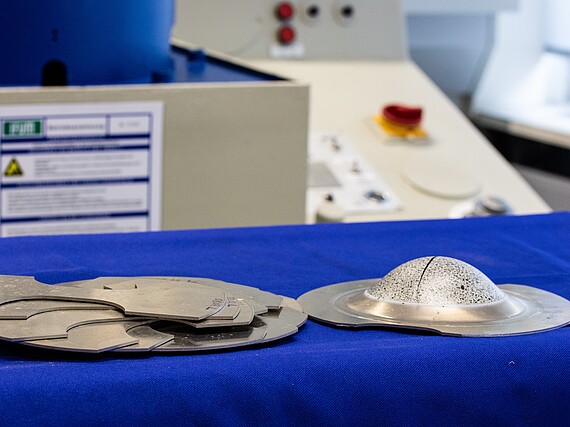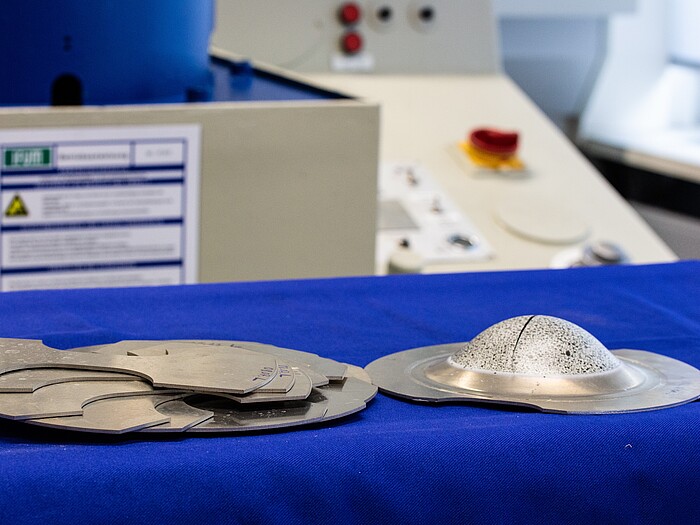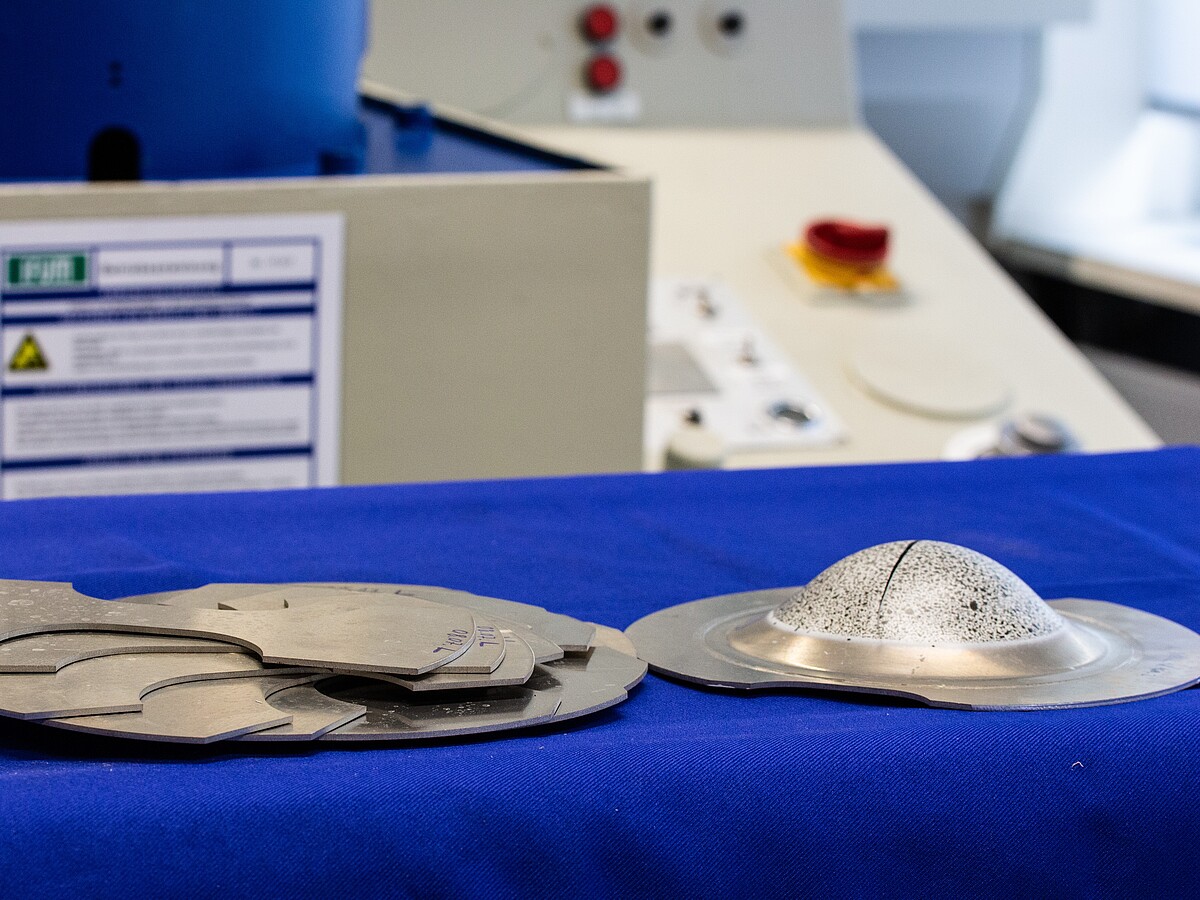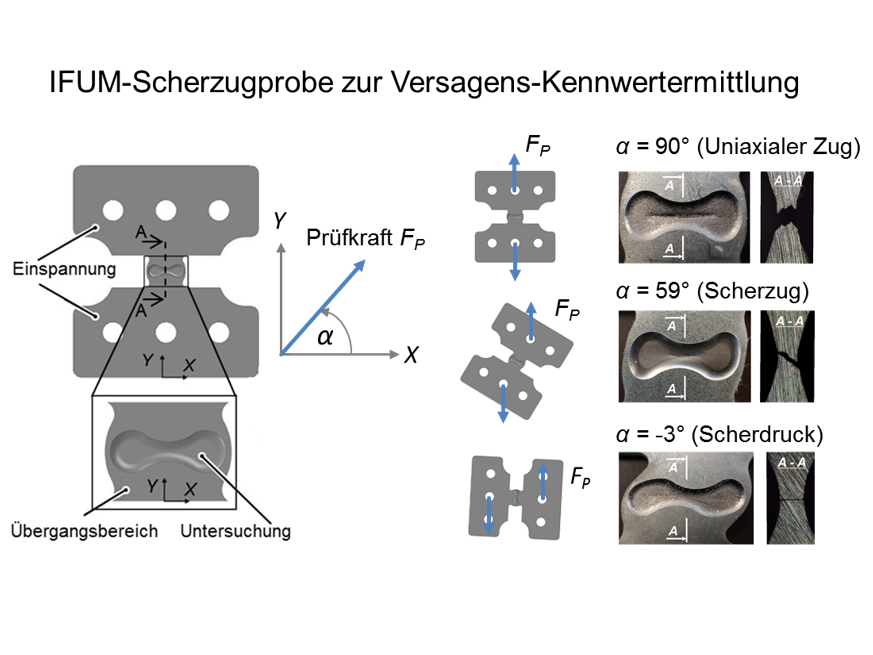


In the process design phase, knowledge about forming limit and damage development in the material is of great importance. At the Institute of Forming Technology and Machines, there are different possibilities for numerical prediction of material failure in the forming process.
It is possible to carry out mechanical and thermomechanical tests to record, evaluate and generate forming limit curves (FLC) for isothermal forming temperatures. The experiments are performed and analysed in accordance with DIN EN ISO 12004-2:2009-02. Punch geometries according to Nakajima and Marciniak can be used. Using a developed experimental test setup FLC can be determined under isothermal condition up to testing temperatures of 1050 °C. In addition to conventional forming limit diagrams, the parameterisation of stress-based failure models is possible using suitable tests. For example, shear tensile tests can be carried out with a butterfly specimen geometry developed at IFUM. Due to a variable test device, stress ranges from shear to uniaxial tension can be investigated. For high measurement accuracy and to visualise the material tests, the experiments are carried out with optical strain measurement (Aramis from GOM GmbH).
Publication
Reducing CO2 emissions is essential nowadays to meet global climate requirements. In this context, decreasing vehicle weight is the most efficient way to lower the fuel consumption of a passenger car. Magnesium combines relatively high strength with low weight and is therefore an interesting construction material for lightweight solutions. In numerical process design, it is important to know the forming capacity of a material. The common method to describe the failure behaviour is the use of forming limit curves (FLC). Stress-based models offer the advantage of considering non-linear strain paths and extending failure prediction to shear and compression states. In this paper, the stress-based failure model Modified Mohr-Coulomb (MMC) model was parameterised using shear tensile tests with the IFUM butterfly specimen for an AZ31 magnesium sheet alloy considering elevated process temperatures. For this purpose, the tests were carried out at different stress states and temperatures using a specially developed testing device. Additionally, FLC were determined by Nakajima tests. Finally, the failure prediction in two numerical simulations by both methods (MMC and FLC) was compared with an experimental deep drawing test. This comparison showed that the MMC model achieved significantly better results than FLC in terms of failure prediction in the application case.
Bernd-Arno Behrens, Hendrik Wester, Matthäus Dykiert (2020); Procedia Manufacturing, Volume 50, Pages: 739-743


































